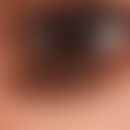Hierfür ist eine Anmeldung erforderlich. Bitte registrieren Sie sich bei uns oder melden Sie sich mit Ihren Zugangsdaten an.
Synonym(s)
DCP; Diphencyprone
DefinitionThis section has been translated automatically.
Obligatory contact sensitizing, therapeutically effective hazardous substance without approval as a drug (orphan drug).
IndicationThis section has been translated automatically.
Topical immunotherapy of alopecia areata, especially severe forms including alopecia areata totalis; verrucae vulgares.
You might also be interested in
Pregnancy/nursing periodThis section has been translated automatically.
Not for pregnant women or mothers who are breastfeeding (contraindicated for formal drug law reasons).
Dosage and method of useThis section has been translated automatically.
Cave! There are no commercial products. The attending physician bears full responsibility for the therapy and its NW!
- Alopecia areata:
- One-time application of a 2% DPCP solution on one side of the head to create a contact sensitization: 2-7 days after application, a (desired) burning and itching as well as an eczema reaction occurs. Patients must be instructed not to wash the hair for at least 48 hours after application and to observe sun protection measures of the treated localities.
- Next application of a highly diluted DPCP solution (0.001%) 14 days after sensitization, then once a week. Slowly increase the concentration. Titration to a dosage (individually very different) that causes an inflammatory reaction with redness and itching the next day and heals with scaling. Treatment once/week for initially 6-12 months, possibly years. Effect begins after approx. 10 applications. Accompanying therapy with steroid-free creams (e.g. Dermatop base cream etc.). Cave! Treatment should be carried out on one side of the skin to prevent spontaneous remission.
- Verrucae vulgaris:
- Application of a 2% DPCP solution to an area of 1 cm2 on the inner forearm to trigger a local inflammatory reaction (repeat once if necessary; failure in 1-3% of patients).
- Application of a 0.1% DPCP solution to warts to be treated (exception: 2% DPCP solution on the soles of the feet!) and covering with adhesive bandage for at least 48 hours. After the local reaction has subsided, keratolysis (e.g. guttaplast patch) and curettage. Repeat the therapy every 1-4 weeks with increasing DPCP doses, depending on the strength of the local reaction: 0.25%; 0.5%; 1.0%; 2.0%; 3.0%; 4.0%; maximum 6%.
Undesirable effectsThis section has been translated automatically.
Severe, sometimes generalized scattering contact allergic eczema; urticaria; erythema exsudativum multiforme; depigmentations.
ContraindicationThis section has been translated automatically.
Children under 10 years of age (contraindicated for formal drug law reasons; studies in children are not known)
Note(s)This section has been translated automatically.
Diphenylcyclopropenone decomposes under the influence of light and heat.
LiteratureThis section has been translated automatically.
- Buckley DA et al (2001) The therapeutic use of topical contact sensitizers in benign dermatoses. Br J Dermatol 145: 385-405
- Shapiro J (1993) Topical immunotherapy in the treatment of chronic severe alopecia areata. Dermatol Clin 11: 611-617
- Tosti A et al (1989) Contact urticaria during topical immunotherapy. Contact Dermatitis. 21: 196-197
- Tosti A et al (2003) Lentiginous eruption due to topical immunotherapy. Arch Dermatol 139: 544-545
- van der Velden EM et al (1998) Dermatography as a new treatment for alopecia areata of the eyebrows. Int J Dermatol 37: 617-621
- Weitzner JM (1990) Alopecia areata. On Fam Physician 41: 1197-1201




